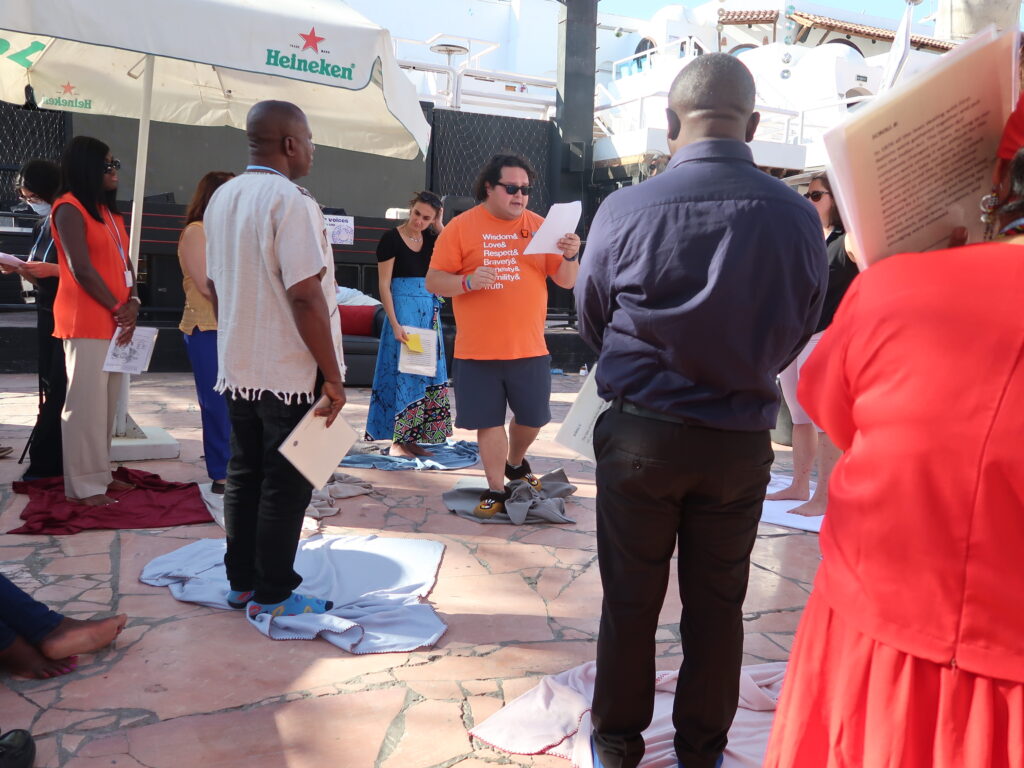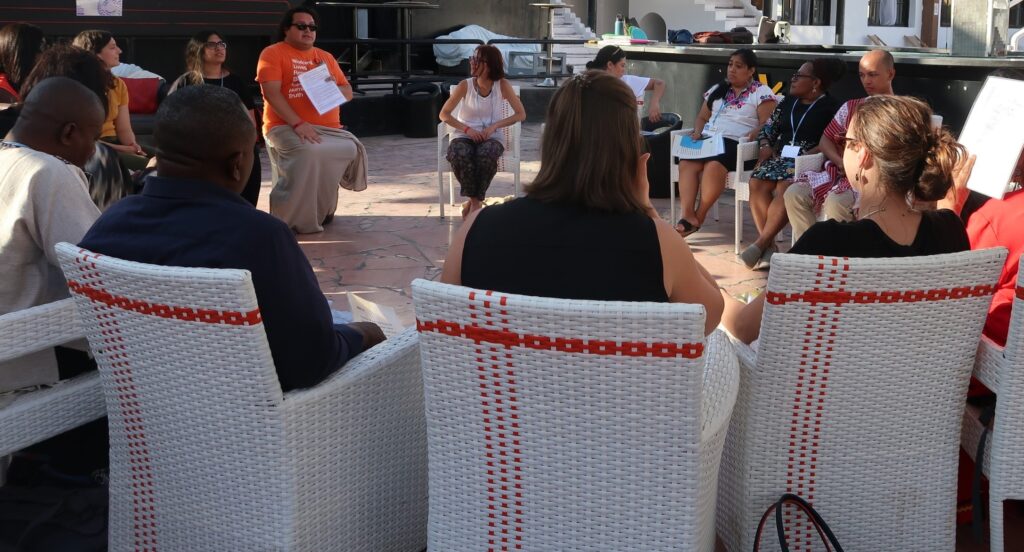Centering Indigenous history and leadership in climate action

Hearing stories of colonization from those whose land and people have also been colonized in other parts of the world was, for me, particularly salient in offering a KAIROS Blanket Exercise at COP27 in Sharm El-Sheikh. It’s important to remember that colonization is not just a story in Canada written by the British. Many lands and people across the world have been – and continue to be – colonized by many empires, nations, and states. I hear this when talking to my relations from other lands.
To facilitate the KAIROS Blanket Exercise is not to simply read a script and walk around on blankets, but to embark on a journey with others who place their trust in you to guide them safely through an emotional learning experience where their knowledge and understanding can become challenged and unsettled. I have had the pleasure and honour to journey with many individuals through truth towards reconciliation almost 50 times in the four years I have been a certified facilitator.

Though I have heard the story of Turtle Island many times, and have led many sharing circles in debrief, each exercise is unique.
I often describe the KAIROS Blanket Exercise as the most participatory geography-history-law lesson you’ll ever experience. At the heart of the Exercise is the story of my people, our land, and our relations from other lands that came to visit. It’s not the happiest of stories. It’s one of pain, suffering, and loss. It is also a story of defiance, resistance, and resilience. This is the story of Turtle Island.
I think of the Blanket Exercise as a gift, offering truth in a way free of judgment and blame that allows us to relate to each other on a deeply personal level. Participants are hard pressed not to feel some level of emotion to the story, and from their empathy are motivated to move forward in their worlds in a good way.
For myself, facilitating the Blanket Exercise has allowed me to understand my people and our land better. It challenges me to better understand the history of the country known today as Canada. It has allowed me to understand myself better, and to reconnect to my culture and people in ways I wouldn’t have been able to previously.
Perhaps the greatest gift I have been given through the Blanket Exercise is one of personal purpose. Through the journeys I have accompanied many on, I have felt the presence of Gitchi Manitou with me, and have heard a calling to commit myself to the deep work of developing strong connections with all our relations through truth building. My hope and prayer is that these efforts will help bring healing and peace to our people.
As a facilitator, I strive to make the Blanket Exercise as accessible and applicable for participants as I can. The way in which I contextualize the Exercise at the beginning and in the sharing circle with which we conclude is often how this can be done. For healthcare workers or students in health-related fields, a better understanding of the health realities of Indigenous people can improve health service provision. For those in the private sector, understanding how wealth has been generated historically can lead to better business practices in the future where Indigenous people are made equitable partners.

Contextualizing the Blanket Exercise for COP27 has been a new challenge for me as a facilitator. What I find myself coming back to is the fact that Indigenous people across the globe have been environmental stewards since time immemorial. We have lived on the land and used resources minimally, and out of necessity. Western scientific understanding would see these traditional practices as ecologically sustainable, but for Indigenous people, we do this out of humility and respect for the earth, our Mother.
In my conversations before and throughout my time at COP27, I have often brought forward the way in which the Anishinaabe, my people, understand ourselves as being one with the land and water. We are not simply humans upon land and water, but physical and spiritual beings that exist interconnectedly: we are the land, and the land is us. I have challenged many people I have spoken with to understand themselves in this way. When we work to heal the Earth, we will heal ourselves.
My experience at COP thus far has been busy, and at times overwhelming, but I am seeing and understanding a new way I can use the Blanket Exercise as a tool to advance climate justice in a good way while delivering the truth in the pursuit of reconciliation. Similarly, as the Blanket Exercise has been a gift for me (it’s the reason I made it to COP!), COP has been a gift to the Blanket Exercise.
By Clifford Musquash, Anishinaabe from Pawgwasheeng (Pays Plat First Nation) on the north shore of GichiGami (Lake Superior), is one of the delegates from Canada.
